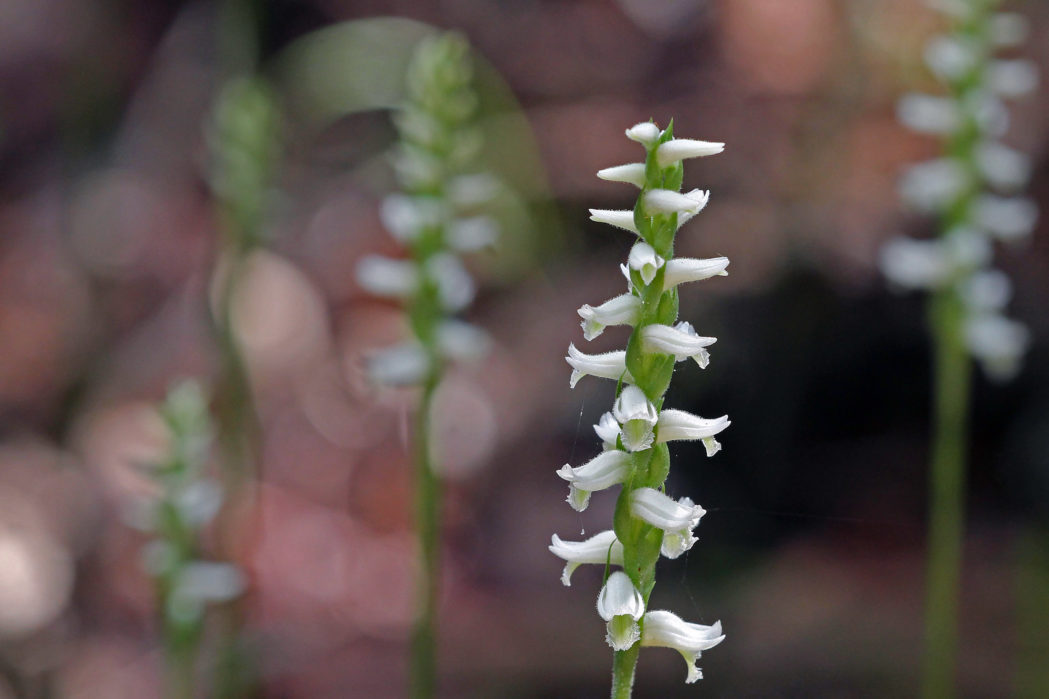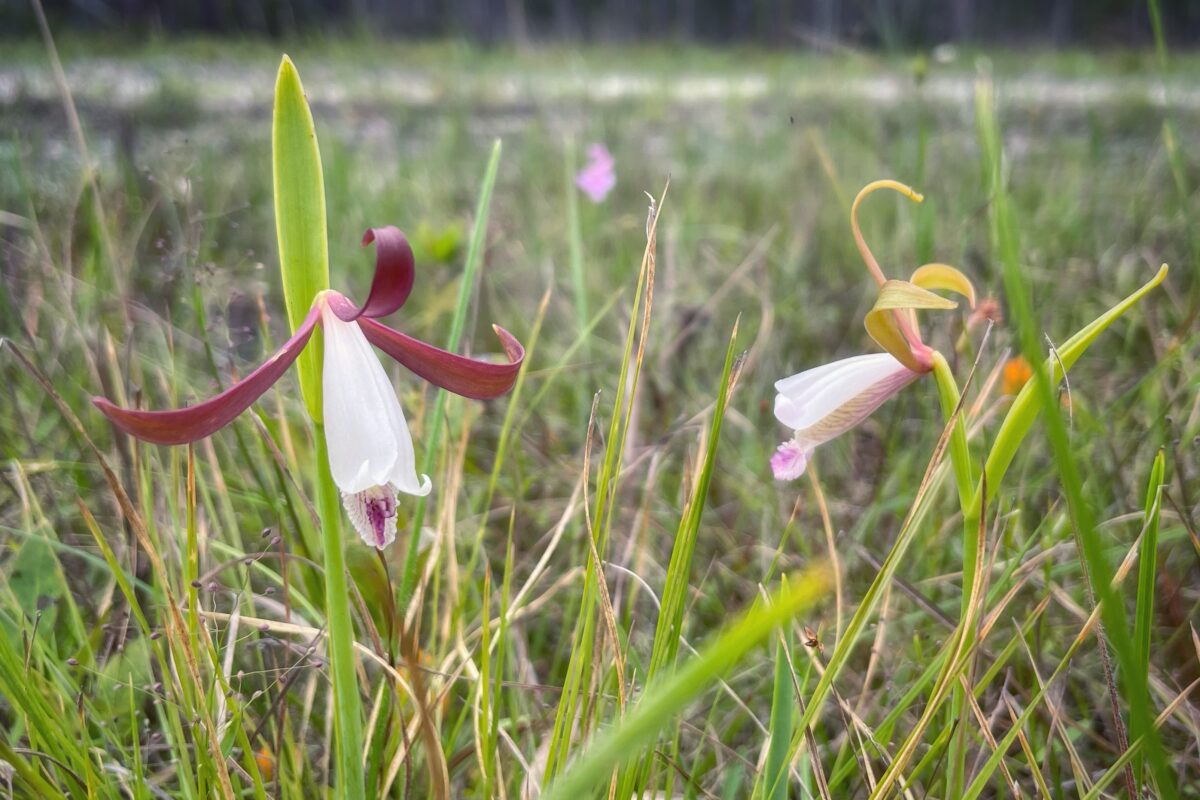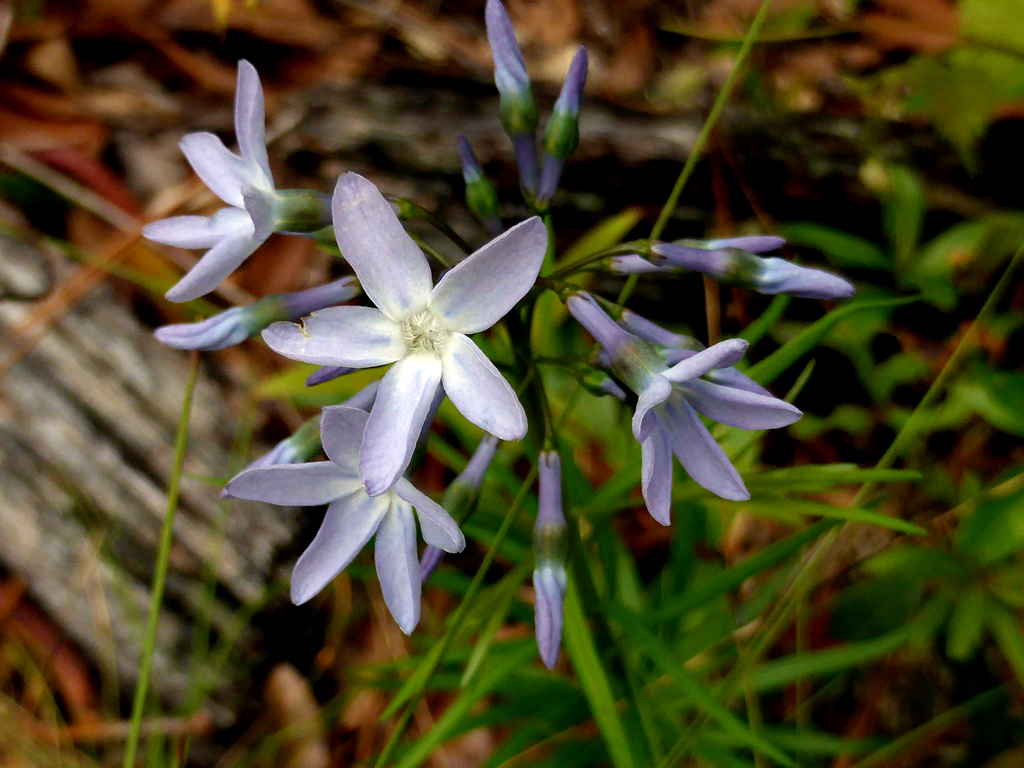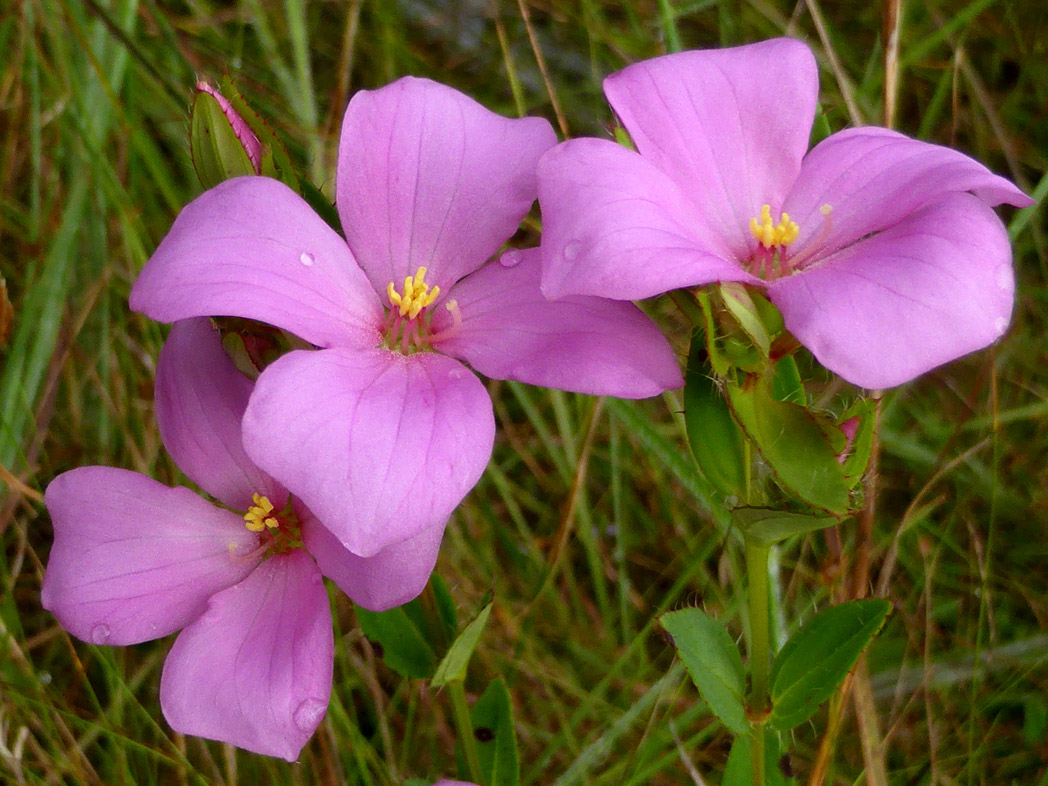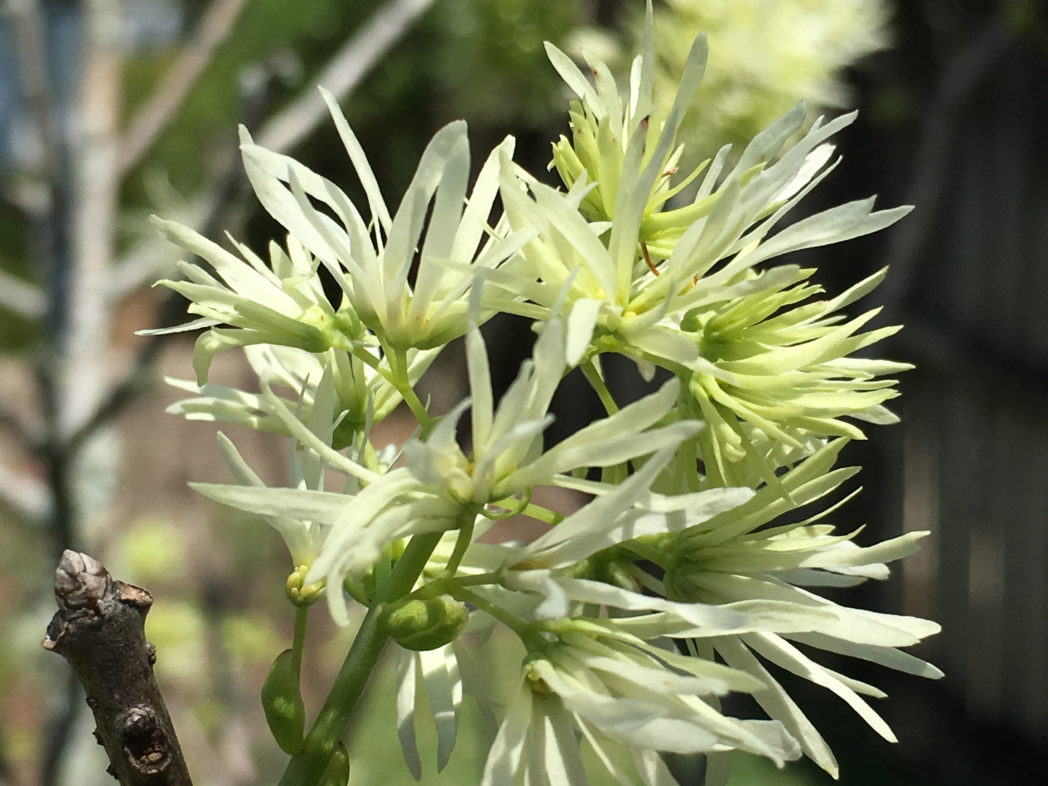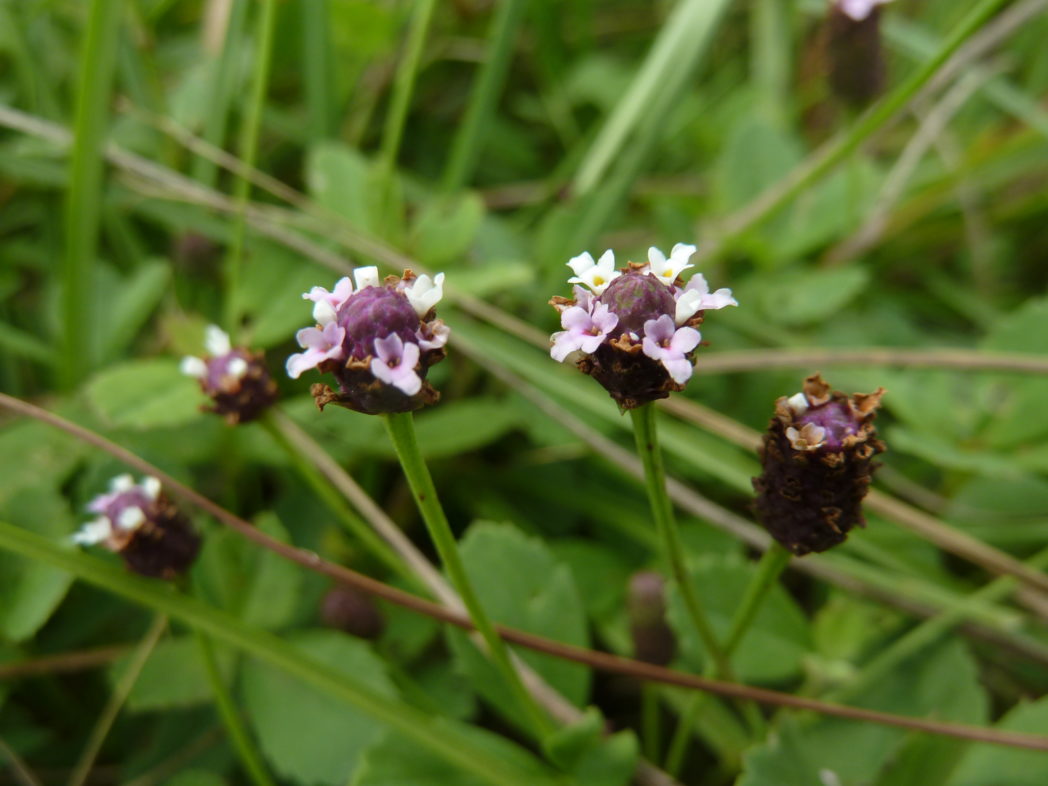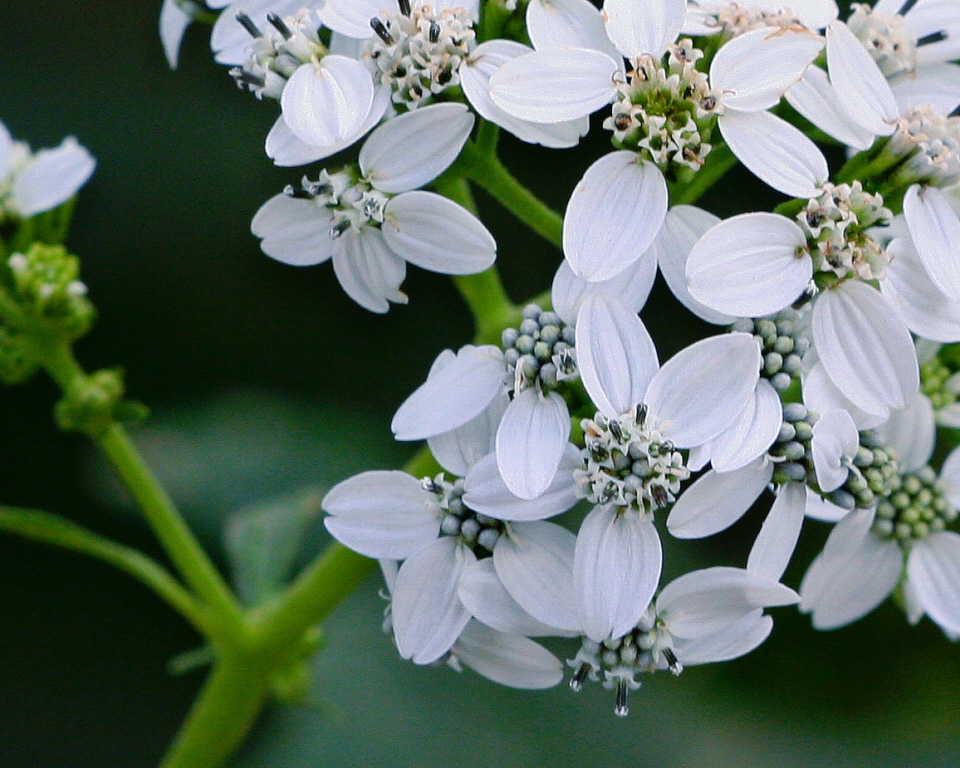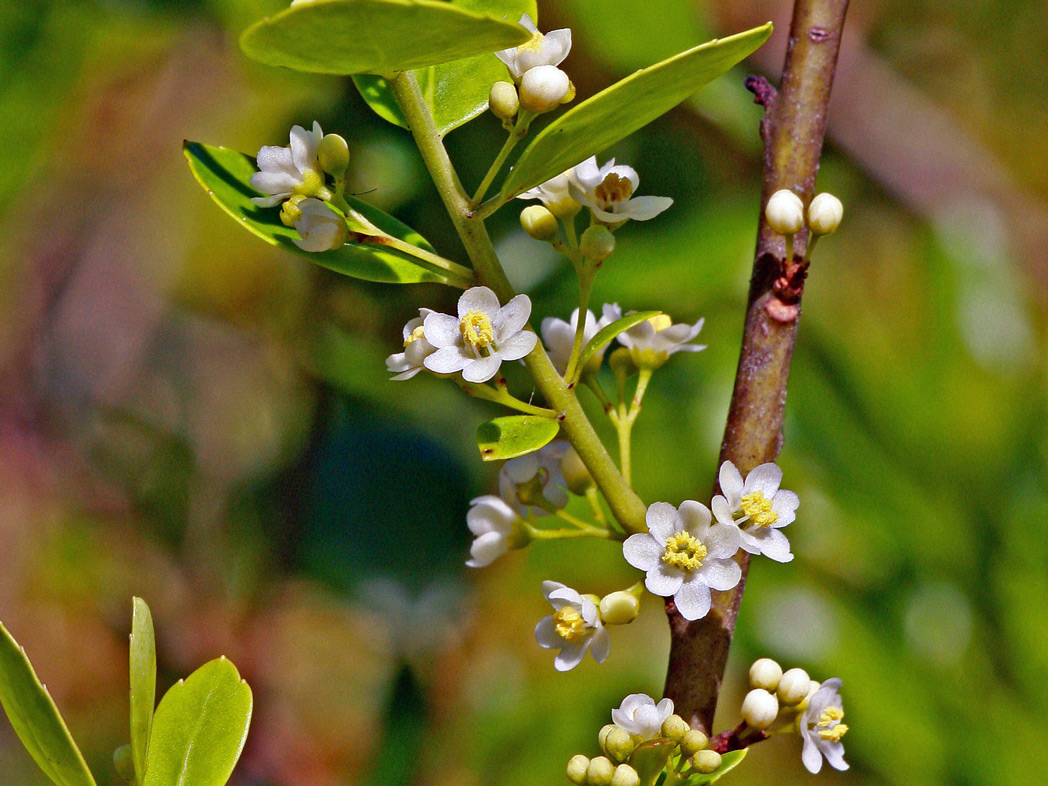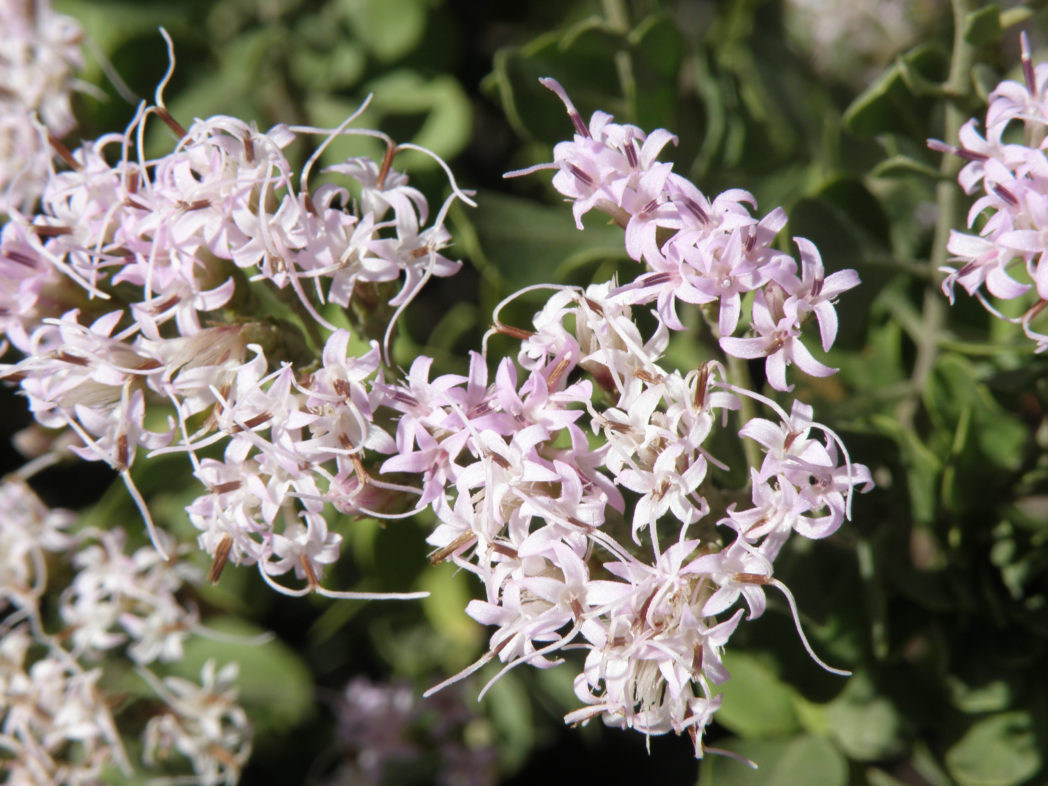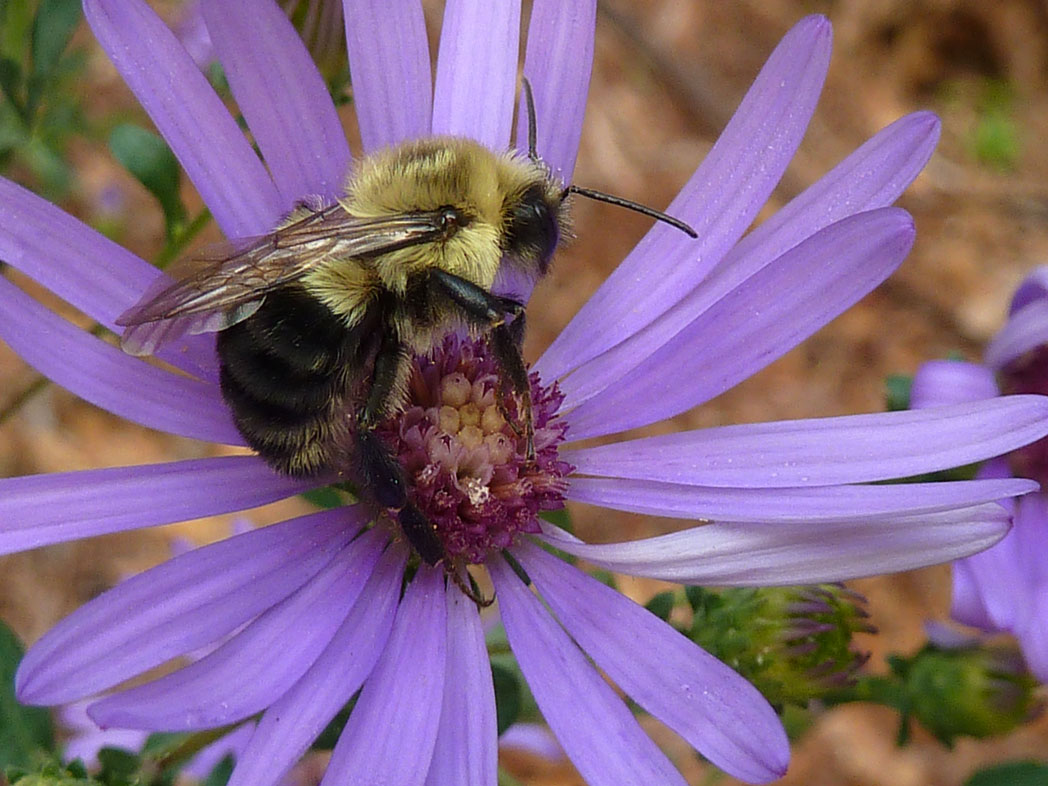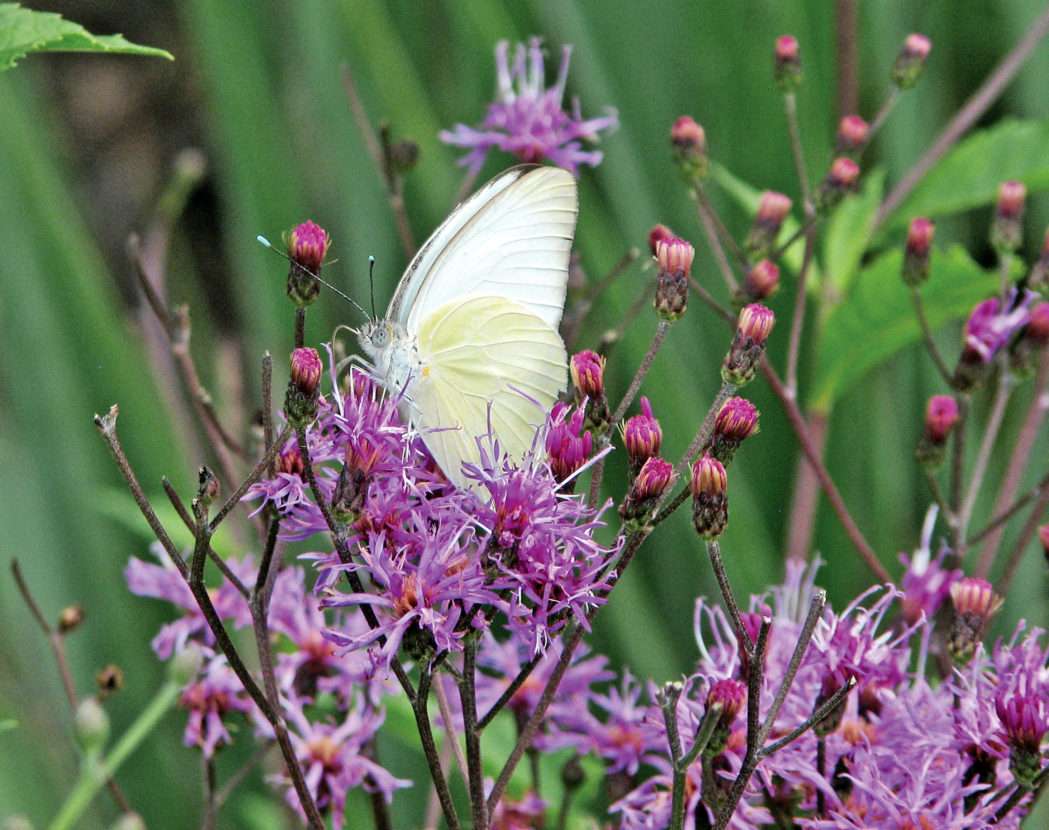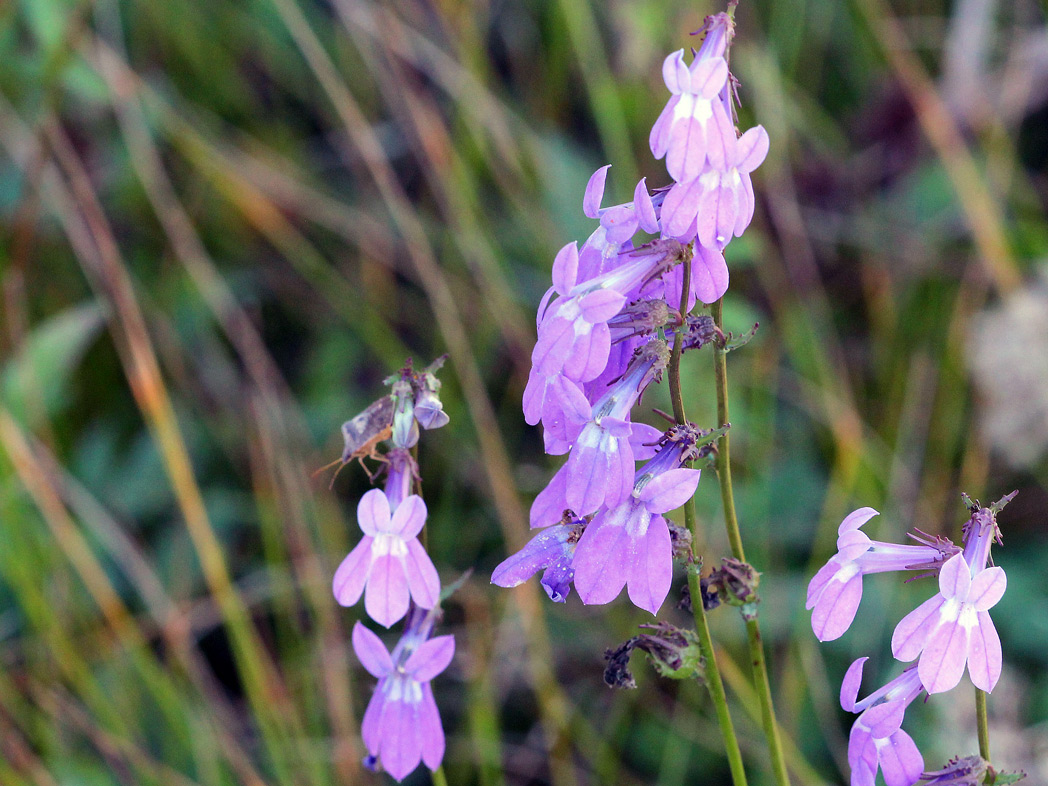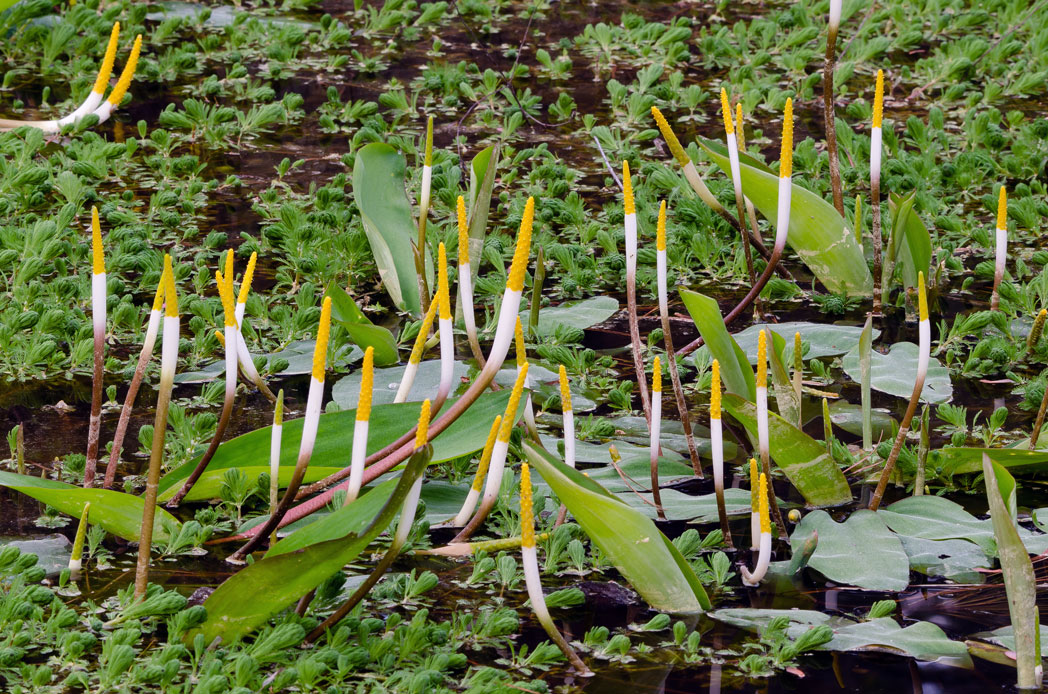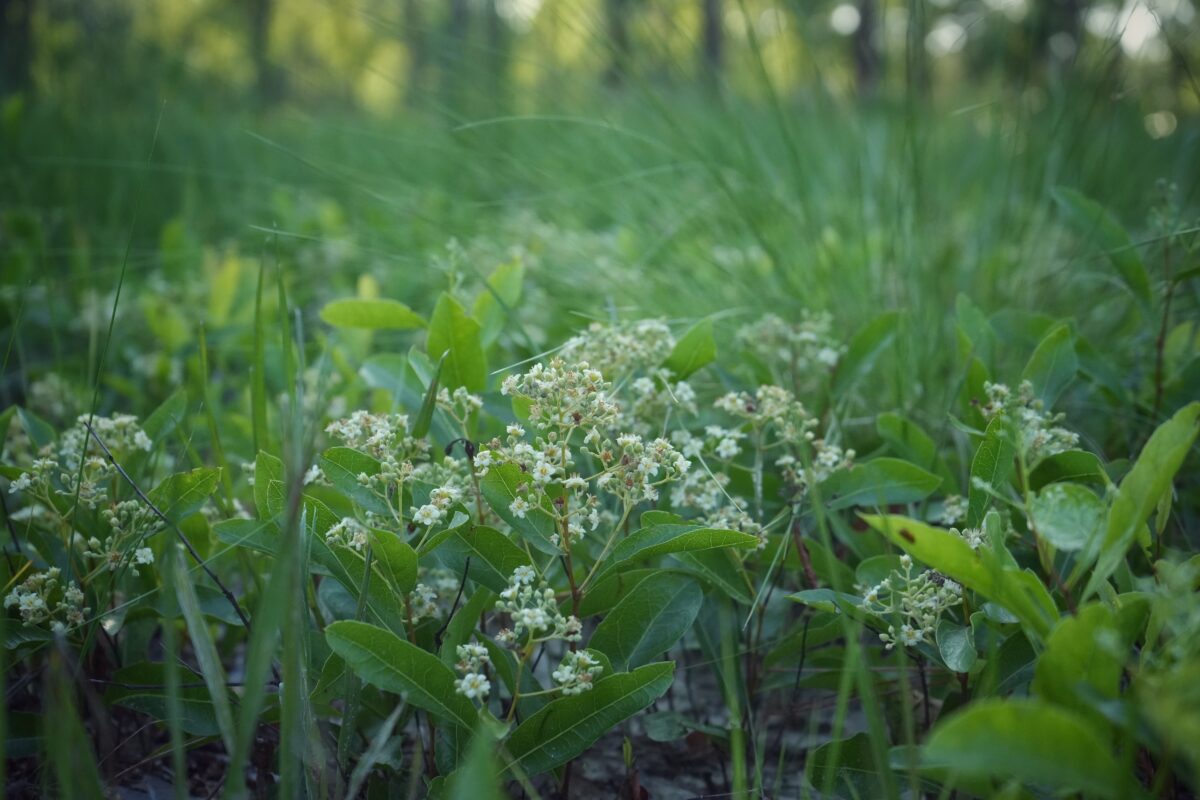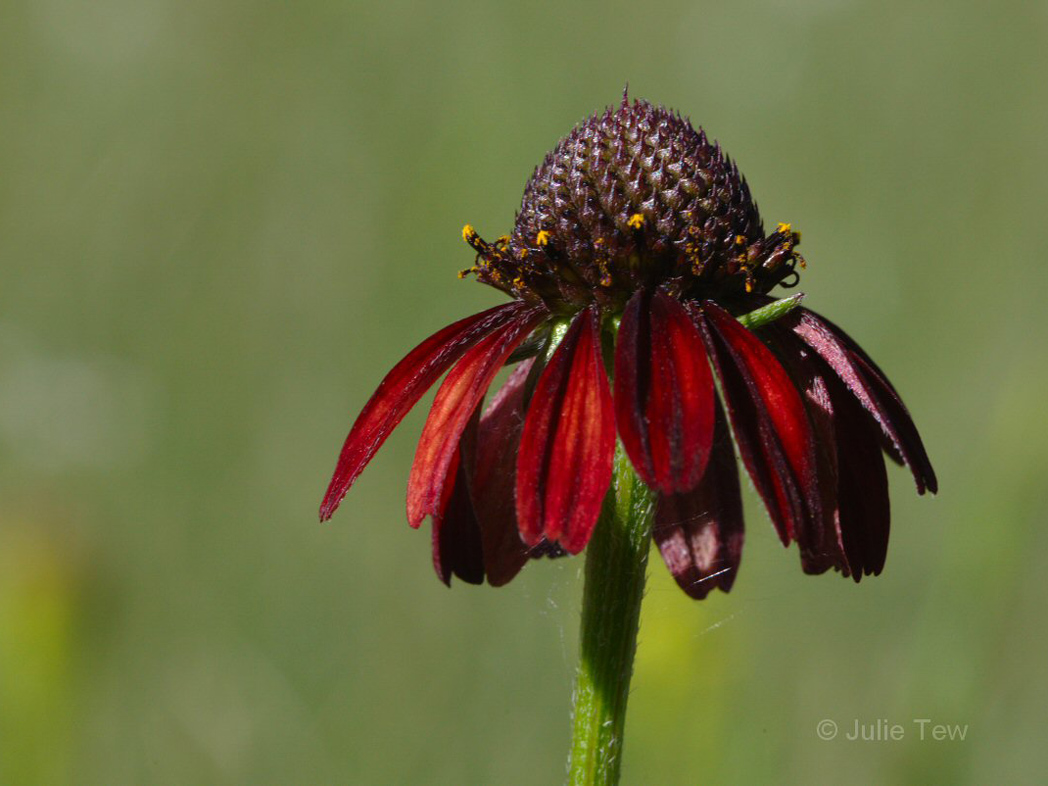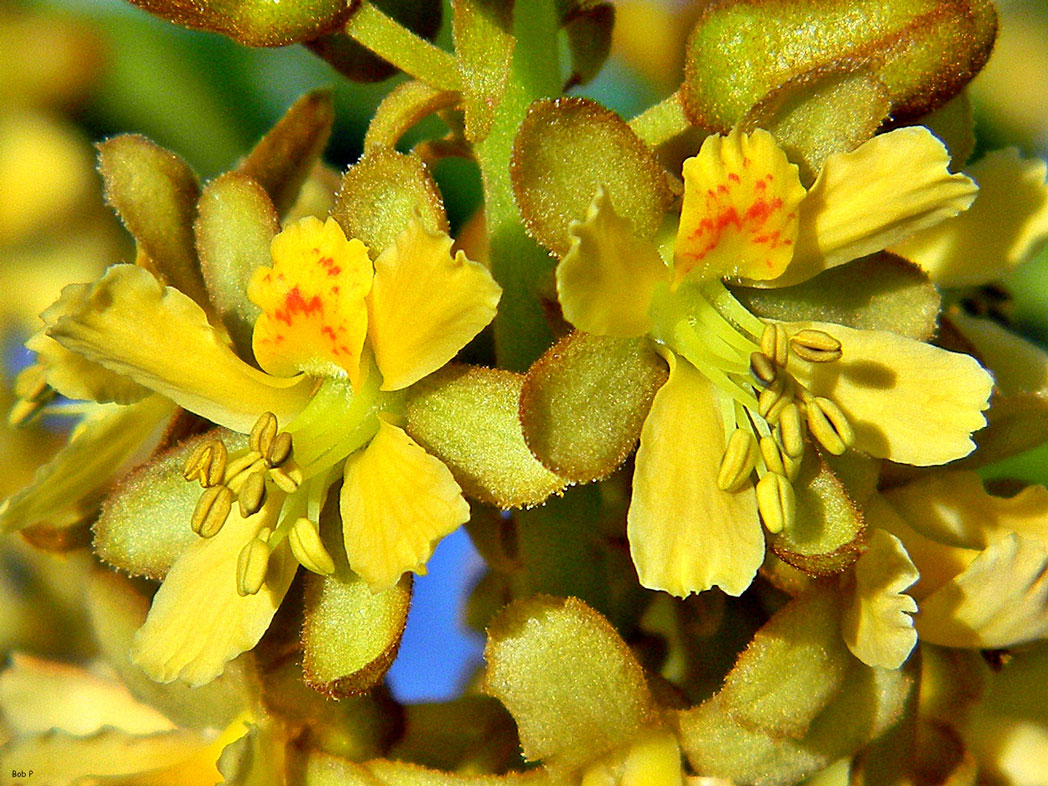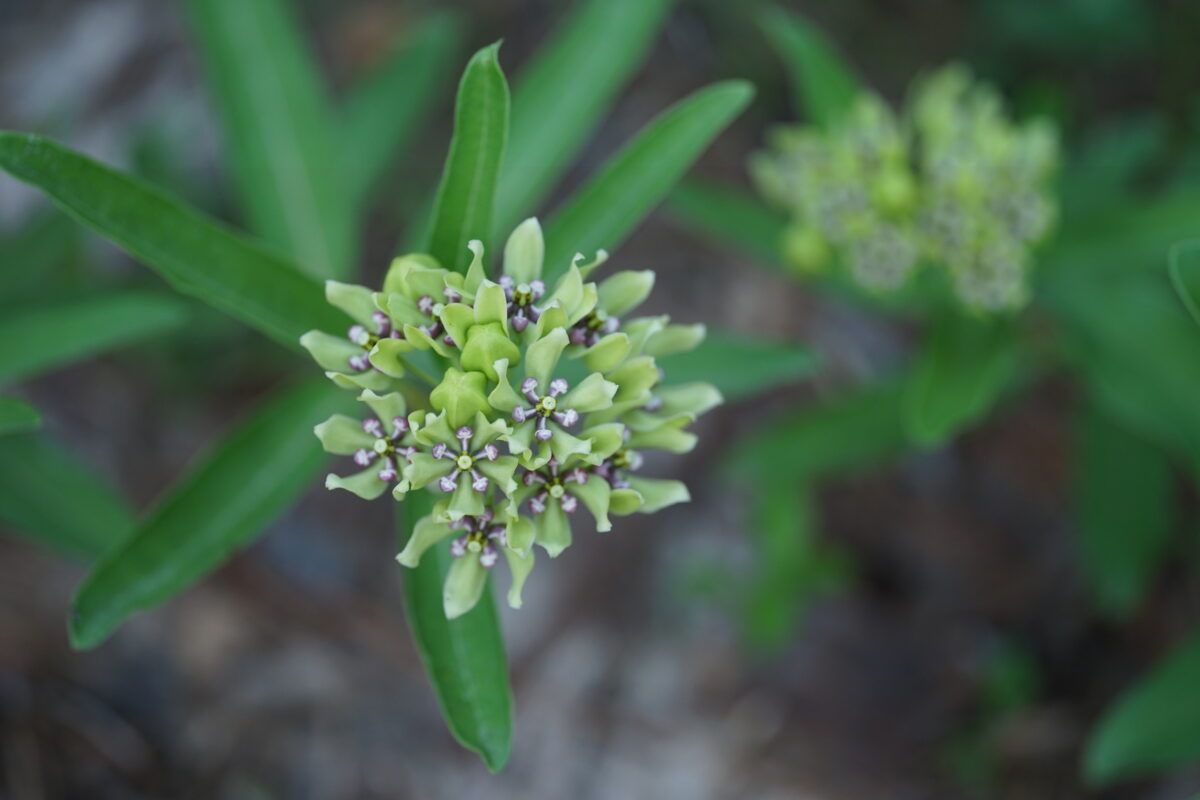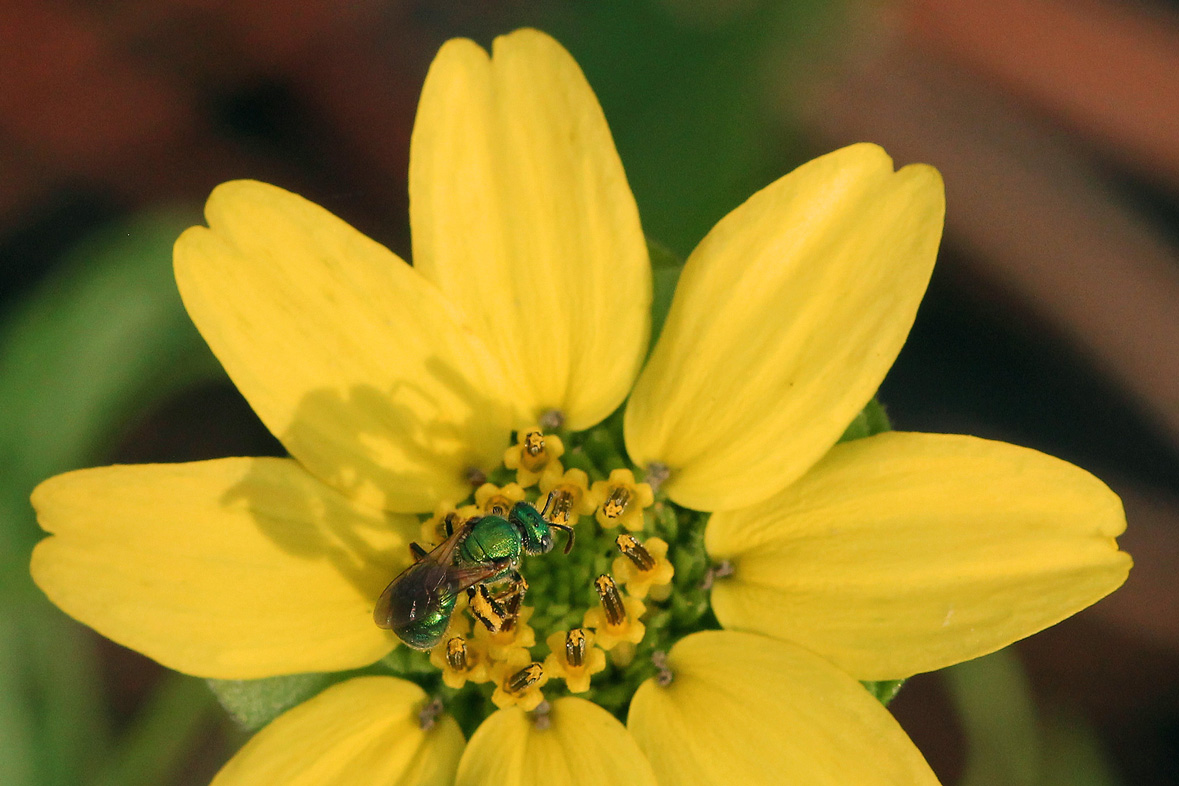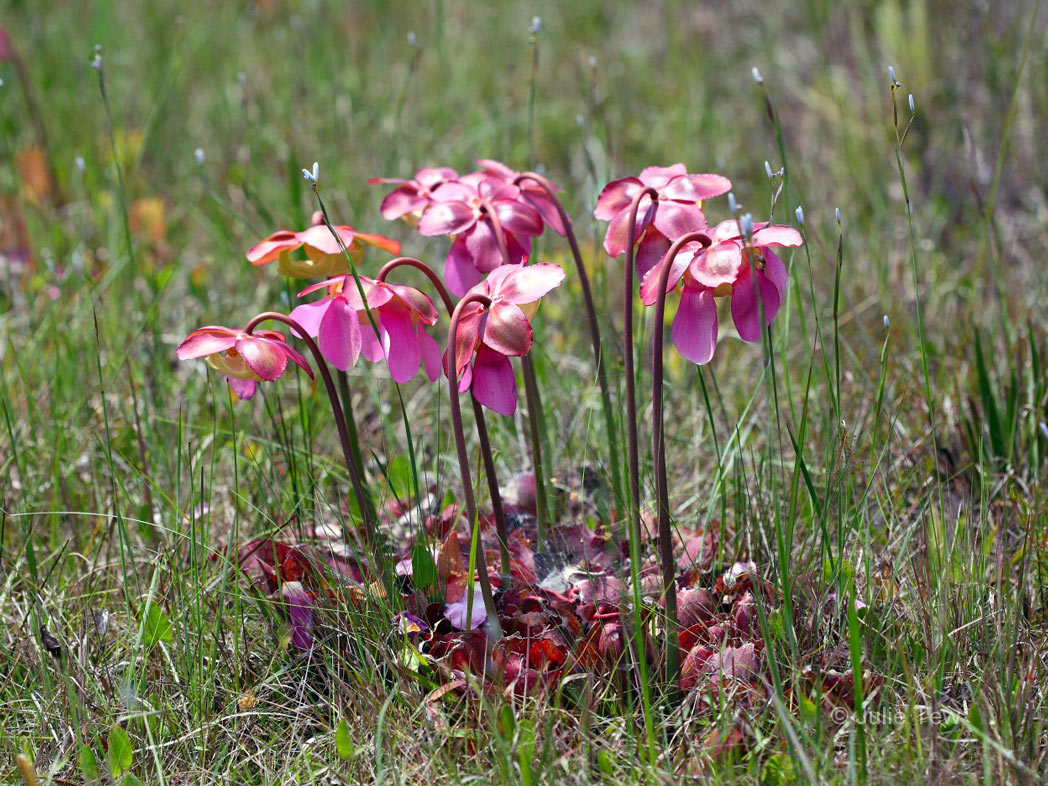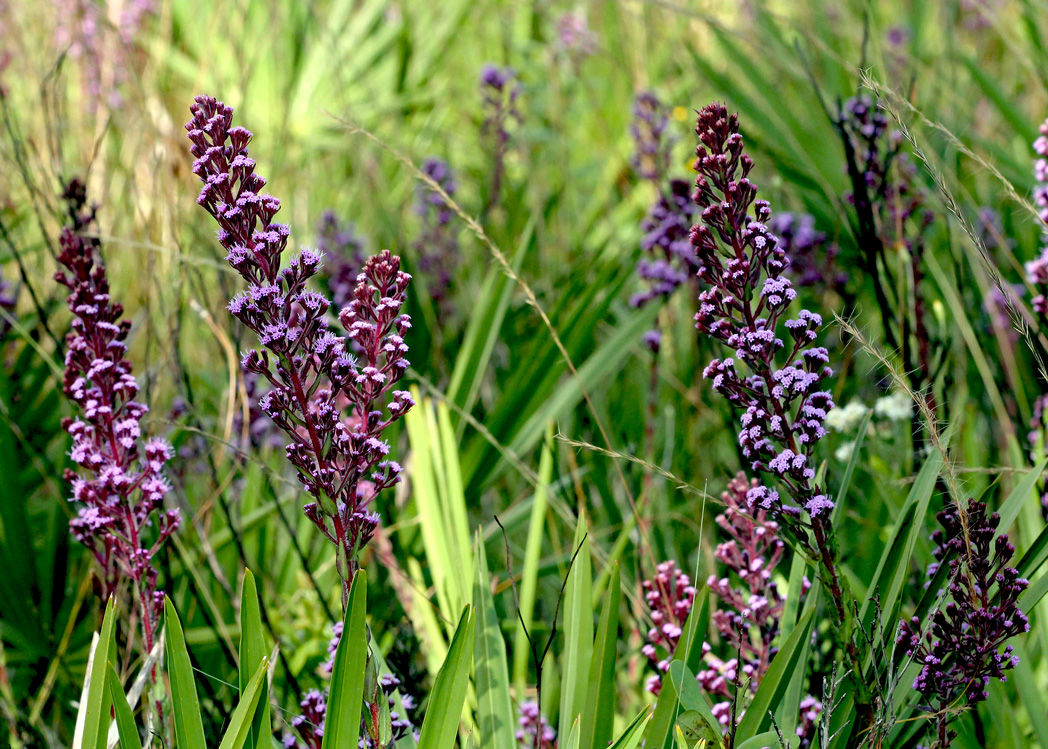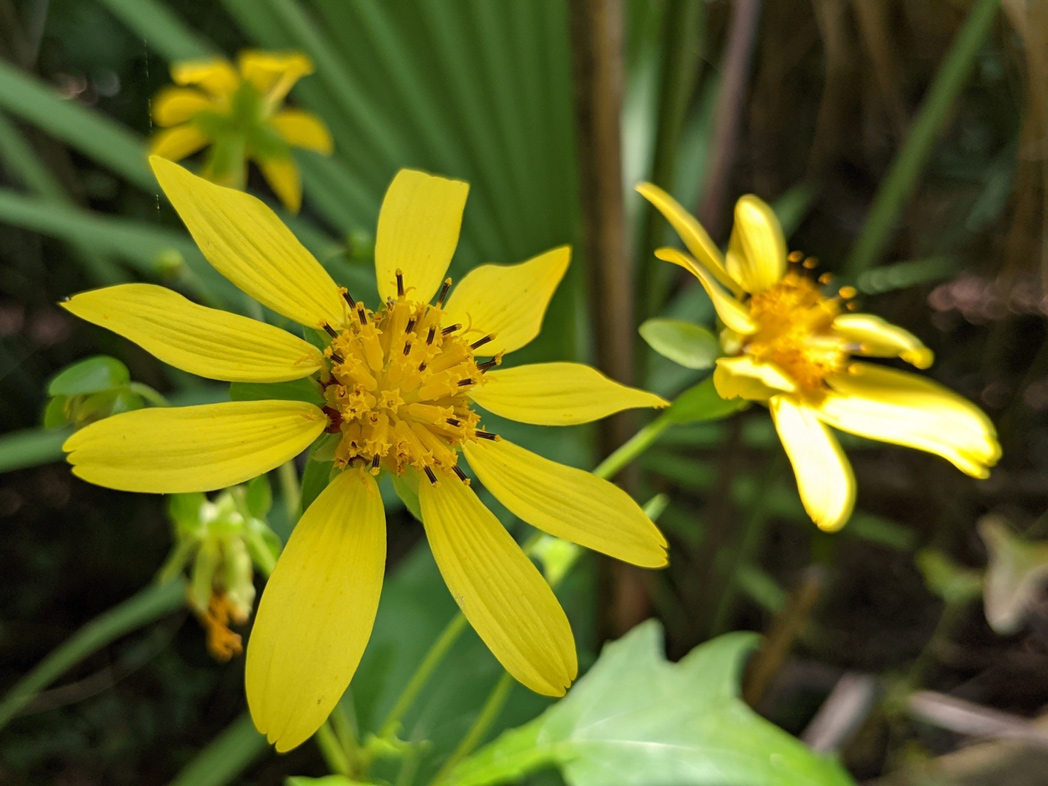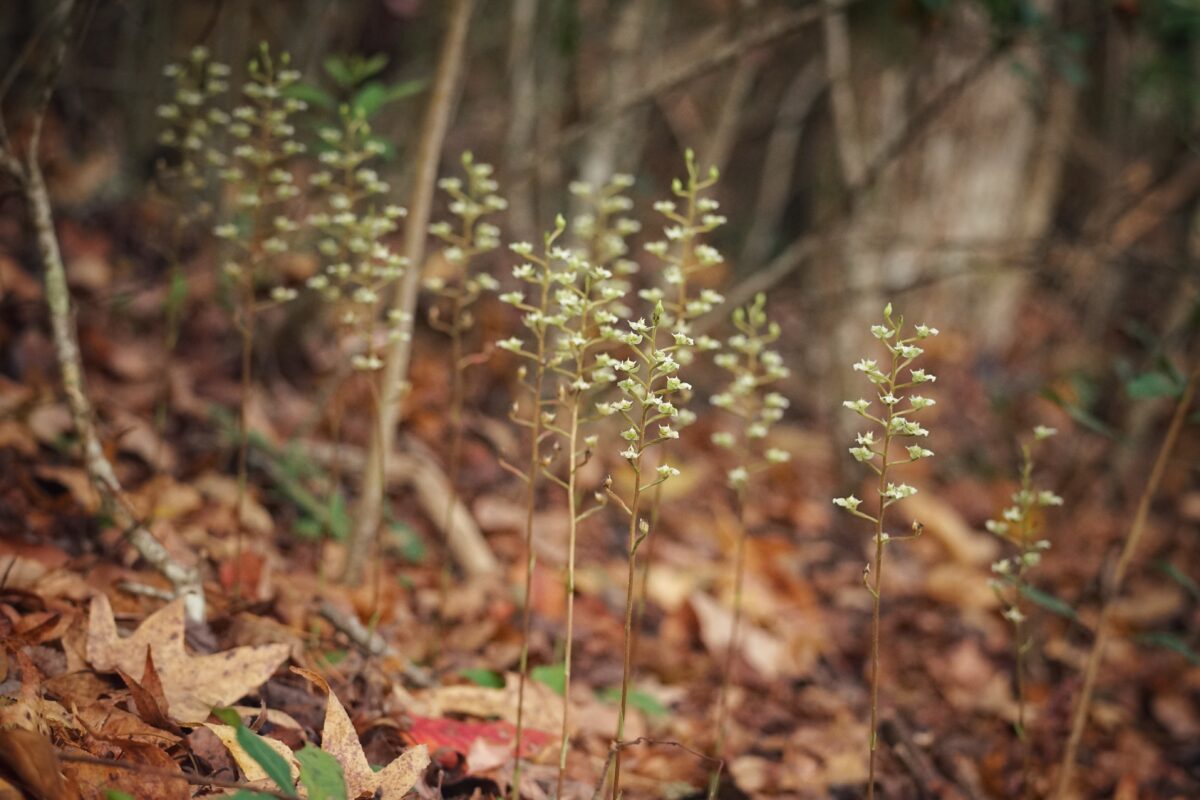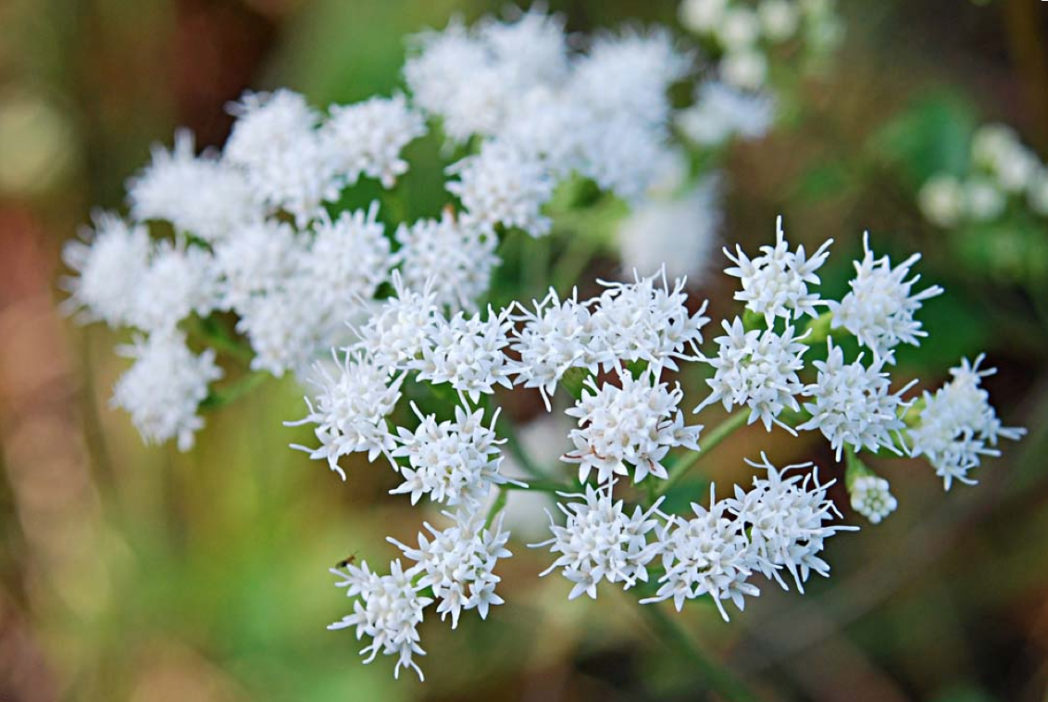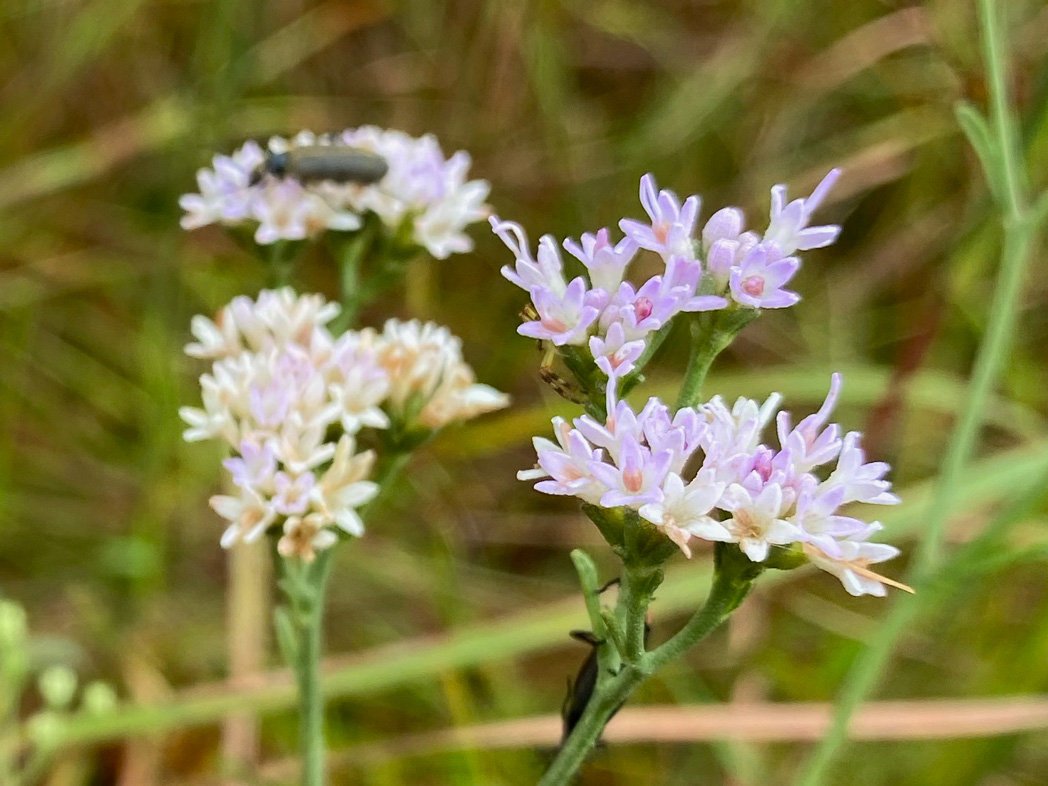Fragrant ladiestresses
Fragrant ladies’-tresses (Spiranthes odorata) is a semi-aquatic to aquatic perennial orchid. The genus Spiranthes comes from the Greek speira or “coil” and anthos or “flower.” It refers to the spiral arrangement of the inflorescence. The species epithet odorata comes from the Latin for “fragrant” or “perfumed” and refers to its delightful vanilla-like scent. Fragrant ladies’-tresses can be found blooming now in swamps, wet pinelands and seepage slopes.
Fragrant pogonia
Fragrant pogonia (Cleistesiopsis oricamporum), also commonly referred to as Coastal plain pogonia, is a delicate and state-listed endangered terrestrial orchid found in the wet flatwoods, savannahs and bogs of Northern Florida.
Fringed bluestar
Fringed bluestar (Amsonia ciliata) blooms spring through fall, attracting many pollinators, especially butterflies. It occurs naturally in pine flatwoods, sandhills and scrub throughout west Central Florida and North Florida.
Fringed meadowbeauty
Fringed meadowbeauty (Rhexia petiolate) is an herbaceous perennial wildflower with showy pink blooms that appear spring through summer and attract many pollinators, especially bees.
Fringetree
Fringetree (Chionanthus virginicus) is often overshadowed by dogwood, plum and other spring-flowering trees. But Fringetree’s graceful tassled flowers put on an equally spectacular display.
Frogfruit
Frogfruit (Phyla nodiflora) is both a versatile and vital wildflower. This evergreen perennial is low-growing and creeping, often forming dense mats of green foliage.
Frostweed
Frostweed (Verbesina virginica) typically flowers late summer through fall along moist forest and hammock edges throughout the state. It is attractive to many bees, butterflies and other pollinators.
Gallberry
Gallberry (Ilex glabra) is an evergreen shrub to small tree with tiny flowers that attract bees. Its pulpy berries and evergreen foliage provide food and cover for birds.
Garberia
Garberia (Garberia heterophylla) is endemic to Florida’s north and central peninsula and is a state-listed threatened species. It is an excellent nectar source for many butterflies and bees.
Georgia aster
Georgia aster (Symphyotrichum georgianum) is a magnet for bees and butterflies. Its flowers are distinguishable from other Symphyotrichum species by their relatively large size and deep violet-colored ray petals.
Giant ironweed
Giant ironweed (Vernonia gigantea) is a robust perennial wildflower that blooms in summer and fall, attracting a variety of pollinators, especially butterflies.
Glade Lobelia
Glade lobelia (Lobelia glandulosa) is a charming perennial wildflower that attracts hummingbirds, butterflies and bees. It is largely unnoticed in the wild until it flowers.
Goldenclub
Goldenclub (Orontium aquaticum) is a peculiar wildflower that blooms in winter and spring, and is pollinated primarily by bees, flies and beetles. It is the only living species in its genus.
Gopher apple
Gopher apple (Geobalanus oblongifolius) is a hardy, low-growing, woody perennial shrub that occurs naturally in sandhills, pine flatwoods, scrubby flatwoods and scrub. It can bloom year-round.
Grassleaf coneflower
Grassleaf coneflower (Rudbeckia graminifolia) has brick-red solitary flowers that bloom in summer. They are distinctly different than most Rudbeckia species. The plant is endemic to Florida.
Gray nicker
Gray nicker (Guilandina bonduc) is a vine-like shrub found in coastal strands and mangrove swamps along Florida’s central and southern coasts, where it clambers over other vegetation. Its striking clusters of fragrant yellow flowers typically bloom in spring and summer, but may bloom year-round in South Florida. The plant is a larval host for the Miami blue and Nickerbean blue butterflies.
Green antelopehorn
Green antelopehorn (Asclepias viridis) is an herbaceous perennial wildflower found in pinelands, pine rocklands and disturbed areas in a few Florida counties. It flowers winter through summer, with peak blooms in spring.
Greeneyes
Florida greeneyes (Berlandiera subacaulis) is an endemic wildflower found in Florida’s sandhills, pine flatwoods, mixed upland forests, and along dry roadsides. Their bright yellow flowers bloom in spring, attracting a variety of pollinators.
Gulf purple pitcherplant
Gulf purple pitcherplant (Sarracenia rosea) is a carnivorous perennial wildflower that blooms in spring. It occurs naturally in wet prairies, seepage slopes and roadside ditches.
Hairy chaffhead
Hairy chaffhead (Carphephorus paniculatus) is a stunning perennial wildflower found in moist flatwoods and savannas. It typically blooms from late August through December, with peak flowering in October.
Hairy leafcup
Hairy leafcup (Smallanthus uvedalia) blooms in summer and attracts a variety of bees and other pollinators. It occurs naturally in hardwood and slope forests, upland mixed woodlands, and moist hammocks.
Hairy shadow witch
The Hairy shadow witch (Ponthieva racemosa) is a stunning terrestrial orchid that blooms in late fall. It grows among the leaf litter of forest hammocks and swampy areas.
Hammock snakeroot
Hammock snakeroot ( Ageratina jucunda) is a low-growing shrub found in pine flatwoods, sandhills, hammocks, upland mixed woodlands, and along roadsides and stream banks throughout Florida’s peninsula and Eastern Panhandle.
Hartwrightia
Hartwrightia (Hartwrightia floridana) is an uncommon inconspicuous wildflower found in only 10 Florida and five Georgia counties. It is a state-listed threatened species in both states, where habitat loss and fire suppression imperil it. The plant occurs in seepage slopes, depressions, marsh edges and wet pine flatwoods and prairies. Its pastel flowers bloom in late summer and fall. Pollination has not been studied specifically in Hartwrightia, but it is presumed its flowers are pollinated by the same variety of insects that pollinate other Asteraceae species.

